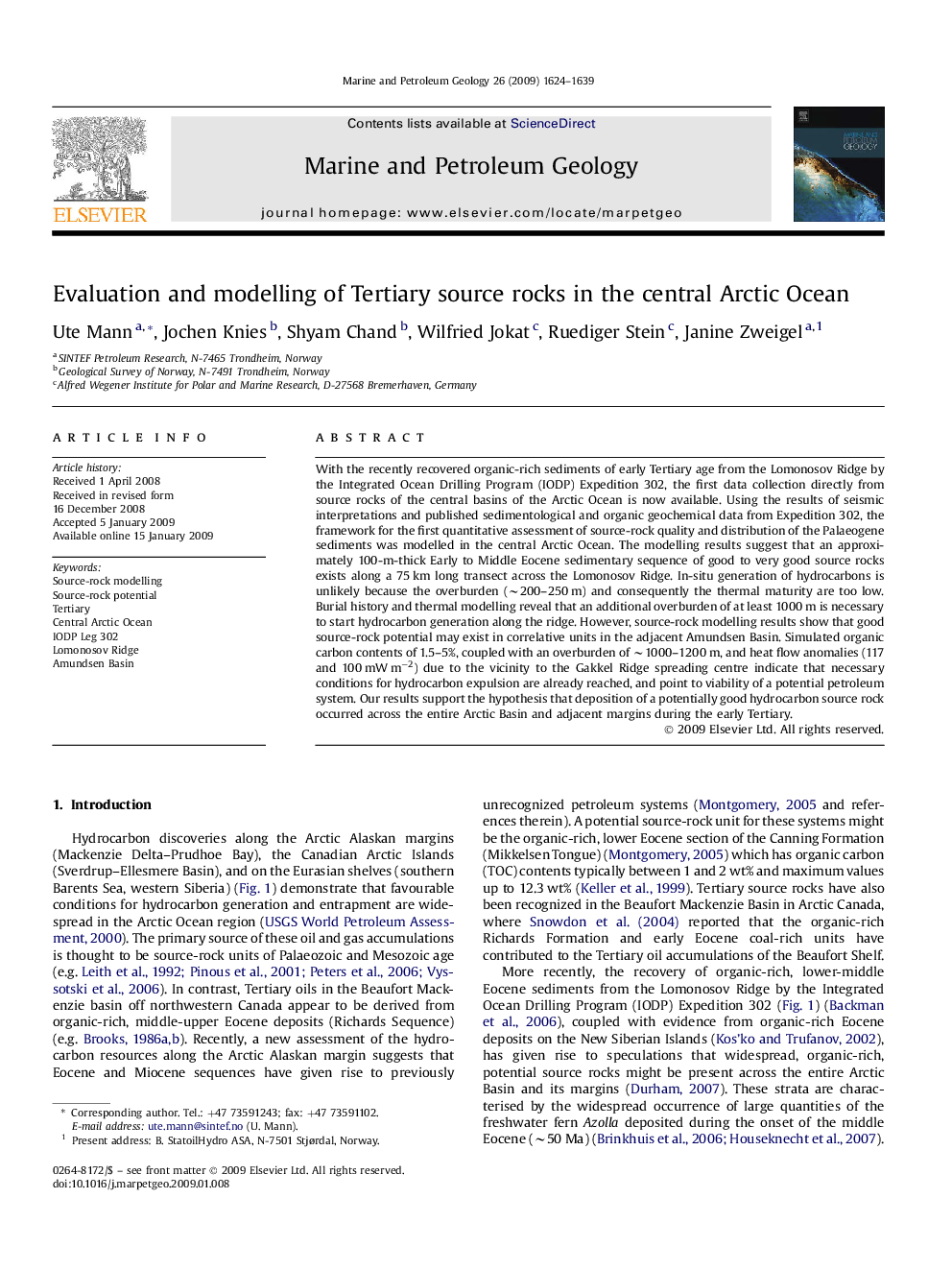| Article ID | Journal | Published Year | Pages | File Type |
|---|---|---|---|---|
| 4696575 | Marine and Petroleum Geology | 2009 | 16 Pages |
With the recently recovered organic-rich sediments of early Tertiary age from the Lomonosov Ridge by the Integrated Ocean Drilling Program (IODP) Expedition 302, the first data collection directly from source rocks of the central basins of the Arctic Ocean is now available. Using the results of seismic interpretations and published sedimentological and organic geochemical data from Expedition 302, the framework for the first quantitative assessment of source-rock quality and distribution of the Palaeogene sediments was modelled in the central Arctic Ocean. The modelling results suggest that an approximately 100-m-thick Early to Middle Eocene sedimentary sequence of good to very good source rocks exists along a 75 km long transect across the Lomonosov Ridge. In-situ generation of hydrocarbons is unlikely because the overburden (∼200–250 m) and consequently the thermal maturity are too low. Burial history and thermal modelling reveal that an additional overburden of at least 1000 m is necessary to start hydrocarbon generation along the ridge. However, source-rock modelling results show that good source-rock potential may exist in correlative units in the adjacent Amundsen Basin. Simulated organic carbon contents of 1.5–5%, coupled with an overburden of ∼1000–1200 m, and heat flow anomalies (117 and 100 mW m−2) due to the vicinity to the Gakkel Ridge spreading centre indicate that necessary conditions for hydrocarbon expulsion are already reached, and point to viability of a potential petroleum system. Our results support the hypothesis that deposition of a potentially good hydrocarbon source rock occurred across the entire Arctic Basin and adjacent margins during the early Tertiary.
